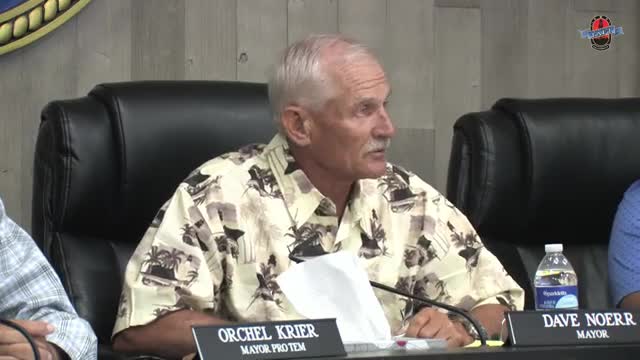Governor's energy claims challenged as California bills soar
August 21, 2024 | Taft, Kern County, California
This article was created by AI summarizing key points discussed. AI makes mistakes, so for full details and context, please refer to the video of the full meeting. Please report any errors so we can fix them. Report an error »

In a recent government meeting, discussions centered around California's energy costs and the effectiveness of the state's transition to renewable energy sources. A constituent raised concerns about rising power bills despite the state's push for renewable energy, questioning when residents might see financial benefits from this transformation.
The governor responded by asserting that California's renewable energy initiatives, including wind, solar, and water, have kept energy prices down, claiming that California has lower residential utility bills compared to states like Texas and Florida. He highlighted a recent rebate of $146 being distributed to millions of customers through the state's cap-and-trade program, emphasizing California's leadership in energy efficiency.
However, this assertion was met with skepticism. A participant in the meeting, Dave Knorr, challenged the governor's claims by referencing data from the U.S. Energy Information Administration (EIA), which indicates that California has the second-highest residential energy costs in the nation, surpassed only by Hawaii. According to the EIA, California's average cost is approximately 34.3 cents per kilowatt-hour, significantly higher than Texas's 14.74 cents and Florida's 13.63 cents.
Knorr provided personal anecdotes comparing his electricity bills in California and Arizona, illustrating a stark contrast in costs. He argued that the governor's statements may misrepresent the reality of energy expenses for Californians, raising questions about accountability in the state's energy pricing and the need for further investigation into potential price gouging by utility companies.
The meeting underscored the ongoing debate over California's energy policies and their impact on residents, highlighting a disconnect between government claims and the lived experiences of consumers.
The governor responded by asserting that California's renewable energy initiatives, including wind, solar, and water, have kept energy prices down, claiming that California has lower residential utility bills compared to states like Texas and Florida. He highlighted a recent rebate of $146 being distributed to millions of customers through the state's cap-and-trade program, emphasizing California's leadership in energy efficiency.
However, this assertion was met with skepticism. A participant in the meeting, Dave Knorr, challenged the governor's claims by referencing data from the U.S. Energy Information Administration (EIA), which indicates that California has the second-highest residential energy costs in the nation, surpassed only by Hawaii. According to the EIA, California's average cost is approximately 34.3 cents per kilowatt-hour, significantly higher than Texas's 14.74 cents and Florida's 13.63 cents.
Knorr provided personal anecdotes comparing his electricity bills in California and Arizona, illustrating a stark contrast in costs. He argued that the governor's statements may misrepresent the reality of energy expenses for Californians, raising questions about accountability in the state's energy pricing and the need for further investigation into potential price gouging by utility companies.
The meeting underscored the ongoing debate over California's energy policies and their impact on residents, highlighting a disconnect between government claims and the lived experiences of consumers.
View full meeting
This article is based on a recent meeting—watch the full video and explore the complete transcript for deeper insights into the discussion.
View full meeting
